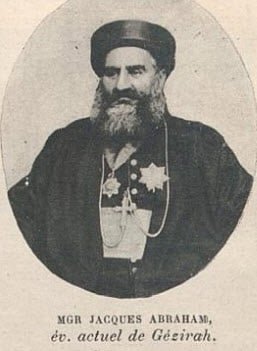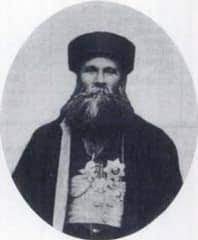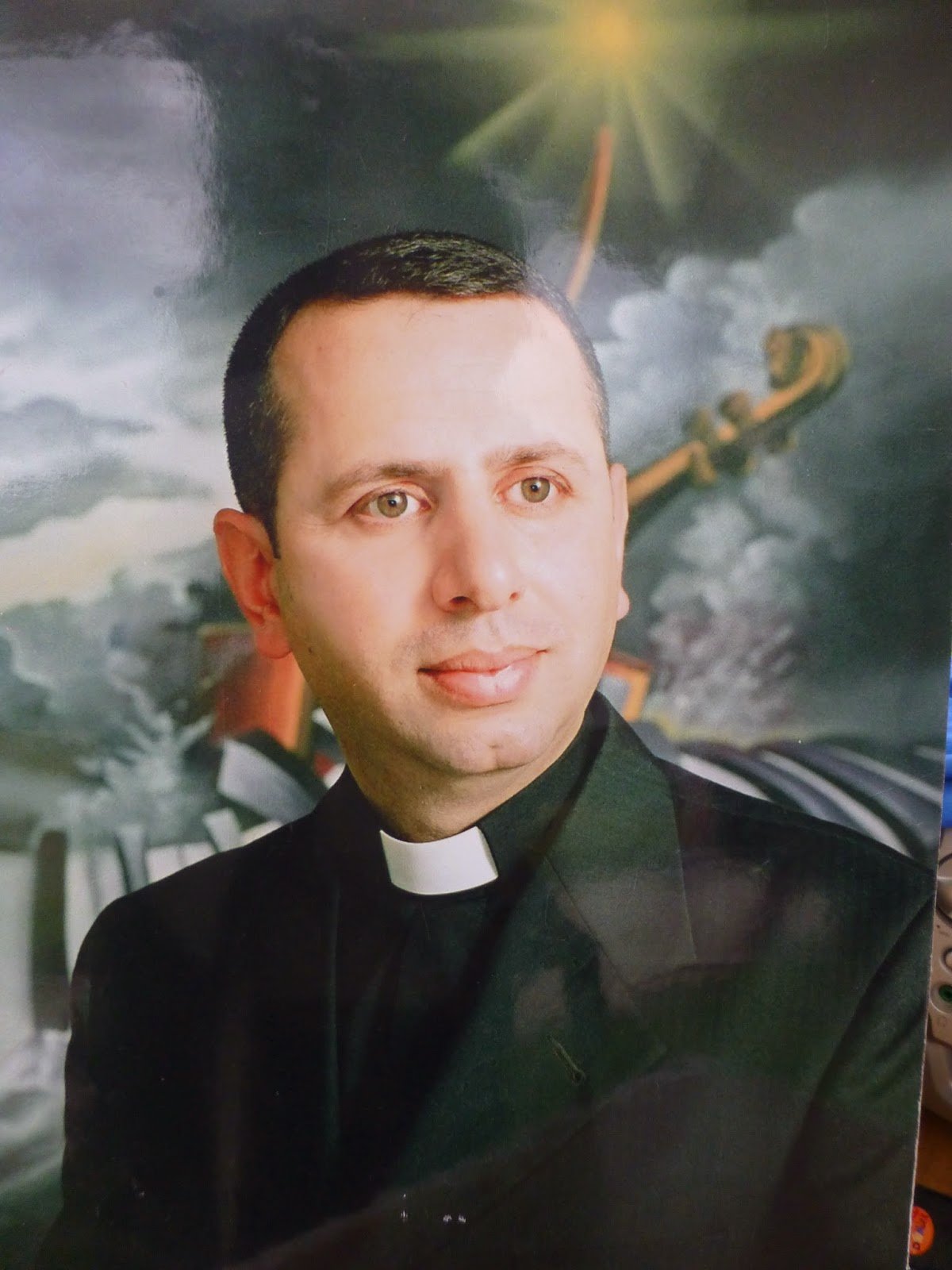A Wall of Martyrs: Catholics Murdered for Their Faith
By Sarah Kittle
For much of history and in many lands, being Christian was considered an act of treason and failure to renounce that belief would result in a death sentence. Called to witness for God and Christ the Savior, these nine brave souls paid the ultimate price for their faith: Mar Philipos Yacob Auraham; Mar Toma Audo; Mar Yacoub Augen Manna; Mar Addai Scher; Mar Benyamin Shimun XXI; Sister Cecilia Moshe Hanna; Mar Paulos Faraj Rahho; Father Ragheed Aziz Ganni; and Father Paulos Eskander.
They are certainly not alone; Catholic World Report published an article in January of 2023 that used data from the Church’s official liturgical calendar, the 2004 Martyrologium Romanum, and data from the Dicastery of the Causes of the Saints to conclude that at least 14,154 men, women, and children have been recognized as martyrs over the centuries. You can count at least a dozen popes among that number, and many more priests.
Some of the martyred were Chaldean Catholics, and the Chaldean Community Foundation plans to honor them with a Martyrs Wall listing their names along with photos.
Mar Philipos Yacob Auraham
Mar Philipos Yacob Auraham
Mar Philipos Yacob Auraham, Bishop of the Chaldean Catholic Diocese of Gezirah (Cizre), was born in Telkeif in 1848. He was 18 years old when he joined the Rabban Hormizd Monastery in Alqosh and was ordained a priest six years later.
He served as bishop to his flock during the Seyfo (Chaldo-Assyrian) Genocide. Mar Philipos tried to help the city’s Christian population by requesting protection from the local Kurdish Agha. He was unsuccessful in his efforts, but they did not go unnoticed. He was subsequently arrested by the Ottoman authorities.
Used as an abject lesson for those who would not renounce their Christian beliefs and convert, Mar Philipos Yacob Auraham was executed a week after his arrest in August of 1915, alongside the Syriac Catholic bishop Flavianus Michael Malke. His body was dragged through the streets as a warning to others to conform or pay the price.
Mar Toma Audo
Mar Toma Audo
Mar Toma Audo, Archbishop of the Chaldean Catholic Church, was born in October 1854. His family was deeply rooted in the church. When he was 15, he traveled to Rome with his uncle, the patriarch Mar Yosip VI Audo, to study theology. Six years later, he returned to Mosul and was ordained a priest.
In 1887, Mar Toma was ordained to the rank of bishop for the newly created Chaldean Catholic Diocese of Urmia. Regarded by some as the “father of Neo-Syriac literature,” he was a scholar who produced a wide variety of literary compositions, including translations of Western works and Catholic theological writings into Neo-Aramaic, and texts on vernacular Aramaic grammar.
During the height of the Turkish occupation, Mar Toma and his flock faced the brutality of the Ottoman Empire. He gave refuge to asylum-seeking Assyrians in a Catholic mission, which ultimately served as the site of their slaughter. On July 27, 1918, hundreds of Assyrian and foreign Christians, including nuns, priests, and laymen were murdered there. Mar Toma was shot in the face and later died in an American hospital after succumbing to blood poisoning.
Mar Addai Scher
Mar Addai Scher
Born Asmar Slewa Scher in Shaqlāwa near Erbil in 1867, Mar Addai was the son and grandson of priests. He studied under his father and was likely a good student; he entered the Seminary of St. John in Mosul in 1879 at the early age of 12 and was ordained a priest 10 years later.
In 1902, Mar Addai was consecrated a bishop of Siirt, a city in eastern Turkey. In 1908, he traveled to Beirut, Lebanon and Constantinople, Turkey, and as far away as Rome, Italy and Paris, France, seeking funds to aid his poor diocese. He met Syriac scholars with whom he shared interests. Mar Addai published many important texts, most notably the Chronicle of Siirt, a history book that put Siirt on the map.
The Ottoman Turks decided he was a liability and tried to kill him. He initially escaped with the aid of friendly Kurds but was ultimately found, ragged and thin from months of running. Mar Addai was tortured by soldiers and when he was finally executed on June 15, 1915, his head was given to the governor.
Rumor has it that prior to his bid for freedom, he hid some manuscripts in a well; however, the location of that treasure has never been found.
Mar Yacoub Augen Manna
Mar Yacoub Augen Manna
Mar Yacoub Augen Manna, Archbishop of the Chaldean Catholic Diocese of Basra, was born in 1867 in Baqofa, Nineveh Plain. At the age of 18, he attended the Patriarchal Seminary in Mosul; the Patriarch Eliya Abbou Alyonan ordained him a priest on August 15, 1889.
Teacher and vicar, Archbishop Manna was an authority on the Arabic and Aramaic languages. He became very well known for his valuable books—especially his Syriac-Arabic dictionary, published in 1900 and reissued in 1975. It is still circulated in seminaries today.
From 1895–1902 he was head of the Seminary of St. John in Mosul and was also involved with the Dominican Press. The power of the written word runs deep in the family. Mar Manna was the great-uncle to Faoud Manna, journalist in Iraq and the US who was featured in the book The Iraqi Press in Exile. Faoud is the father of Martin Manna, president of the Chaldean American Chamber of Commerce and Chaldean Community Foundation and publisher of this newspaper.
While he was hoping to go to Rome, Mar Manna mysteriously disappeared on Holy Thursday in 1928. His body was found in the Tigris River near the village of Salamiyah on March 15, nearly a month later.
Mar Benyamin Shimun XXI
Mar Benyamin Shimun XXI
Mar Benyamin Shimun XXI, Catholicos-Patriarch of the Church of the East, was born in 1887 in the village of Qochanis (Qudshanis) in the Hakkari Province of the Ottoman Empire, in present day Turkey. His father, Eshai, and mother, Asyat, had six other children. One would succeed Benyamin as Patriarch; another would fall victim to the Deportation of Armenian Intellectuals while studying in Istanbul in 1915.
Mar Benyamin was consecrated a Metropolitan (diocesan bishop or archbishop of a metropolis) by his uncle Mar Rueil Shimun XX, two weeks before the uncle passed away. A quick decision was made by the Church hierarchy and Mar Benyamin was elevated to the exalted rank of Catholicos Patriarch on March 30, 1903, at 16 years of age.
Mar Benyamin received the crown of martyrdom on March 3, 1918, when he was 31 years old. He and many of his 150 bodyguards were assassinated by Simko Shikak, a Kurdish agha. They were in the town of Kuhnashahir in Persia on a peace mission, under a truce flag. Their deaths are counted as part of the Seyfo Genocide.
Sister Cecilia Moshe Hanna
Sister Cecilia Moshe Hanna
Sister Cecilia Moshe Hanna was born in 1931 in Araden, in northern Iraq. Orphaned at five, she was raised at the Monastery of the Sacred Heart in Araden. Later, due to unrest in Araden, she moved to Mosul, then to the same order in Baghdad. A member of the Congregation of the Scared Heart of Jesus, Cecilia became a nun, dedicating her youth to the service of the sick, poor and needy.
On August 15, 2002, she was staying alone at Sacred Heart Monastery in Baghdad when three armed men broke in and stabbed the 71-year-old nun for the crime of being Christian. It was the day before a scheduled nationwide Christian spiritual retreat and the speculation is that her murder was a message. It was especially brutal; her neck was slit, and her head severed from her body.
Sr. Cecilia was found by her fellow sisters the next day when she failed to appear at the retreat.
Father Ragheed Aziz Ganni
Father Ragheed Aziz Ganni
Father Ragheed was born on January 20, 1972, in Mosul, Iraq. He attended Mosul University and obtained a degree in Civil Engineering in 1996. After fulfilling his obligation to serve in Iraq’s military, compulsory under the regime of Saddam Hussein, he entered the seminary.
Ragheed was sent to Rome to study and was ordained a priest while there at the Pontifical Urbaniana University in 2001. He celebrated his first Mass in the chapel at Irish College. While in Rome, he stayed at the Pontifical Irish College and played soccer for them. They have an annual tournament that has since been renamed the “Ragheed Cup” in his honor.
On June 3, 2007, Ragheed had just finished celebrating the Sunday evening Holy Qurbana. Three of his deacons, including one of his cousins, had decided to accompany him because of recent threats against his life. They were shot down together in front of the church and in front of witnesses, who heard an exchange between Ragheed and his murderers, in which Ragheed was asked, “Why didn’t you shut down the church like we asked?” He replied, “How can I close the house of God?” After refusing to convert to Islam, they were murdered. Thousands of people attended the funeral of the four men in Karemlash.
Father Ragheed was secretary to Paulos Faraj Rahho, the Archbishop of Mosul of the Chaldean Church, Iraq’s largest Christian community. Rahho was murdered only nine months after Ragheed’s death, in the same city of Mosul.
Mar Paulos Faraj Rahho
Mar Paulos Faraj Rahho
Mar Paulos Faraj Rahho was born in Mosul on January 20, 1942, to Stephan Rahho and Madlene Samoee. He was 12 years old when he entered St. Peter Junior Seminary in Baghdad.
He was ordained the Chaldean Archbishop of Mosul on February 16, 2001. The youngest of eight in a deeply rooted Chaldean Catholic family, Paulos was by all accounts a man of good humor and compassion. He opened a home for orphans and individuals with disabilities in Mosul and was infamous among his fellow bishops for his jokes.
In August of 2004, he was marched out of his residence and made to watch as extremists set the building on fire. Due to his work in interfaith relations, a local Imam offered him accommodations at a local Mosque complex while the building was being repaired. During a trip to Rome in 2007, he would confide to the patriarch of Babylon, Emmanuel III Delly, that he had been threatened in Mosul on at least one occasion.
On February 29, 2008, Bishop Rahho was kidnapped from his car in the Al-Nur district of the city of Mosul. His two bodyguards and driver were killed. According to church officials, “gunmen sprayed the archbishop’s car with bullets, killed two bodyguards and shoved the bishop into the trunk of a car.”
According to news reports, the archbishop was able to send a message on his phone from the trunk asking that no ransom be paid for him, as the money would go toward evil works.
The archbishop’s body was found in a shallow grave on March 13, 2008, in in Al-Karama District in Mosul. He was subjected to torture. The funeral services were held in the town of Karemlash, with Cardinal Emmanuel III Delly, who wept, attending along with many other dignitaries.
Rev. Father Paulos Eskander
Rev. Father Paulos Eskander
Rev. Father Paulos Eskander, Vicar of the St. Ephrem Syriac Orthodox Church in Mosul, was kidnapped for ransom and three days later beheaded and dismembered. His captors left a message linking the murder to a papal speech critical of Islam.
Abducted on October 9, 2006, in Mosul by unknown Islamic militants, the Orthodox clergyman was outspoken about his opposition to occupation. His relatives confirmed that his captors demanded payment of $350,000 US dollars in ransom.
The kidnapping was ostensibly in protest of Pope Benedict’s remarks about Islam at Regensburg on September 12, 2006. The parish was required to apologize for the Pope’s remark, which they did; however, their pleas for the release of the priest were rejected.
Father Eskandar’s decapitated body was found on October 11, 2006, in Mosul’s Muharaibin neighborhood. His body, especially his arms, showed sign of torture. Iraq’s highest Sunni Religious Authority (The Ulema Council), called the priest’s death “a cowardly murder.”
Approximately 500 people attended the funeral for Father Eskander on Friday, October 13, 2006.
A Church of Martyrs
Millions of Christians in the Middle East have been uprooted from their ancestral homes, and many have been killed, kidnapped, imprisoned, or otherwise discriminated against, according to a report commissioned by British Foreign Secretary Jeremy Hunt in 2019.
The report, quoted in the UK Guardian in May of 2019, shows that a century ago Christians comprised 20% of the population in the Middle East and north Africa, but since then the proportion has fallen to less than 4%, or roughly 15 million people.
In the Middle East and north Africa, the report says, “forms of persecution ranging from routine discrimination in education, employment and social life up to genocidal attacks against Christian communities have led to a significant exodus of Christian believers from this region since the turn of the century.”
This report comes more than a decade after Emmanuel III Delly, Patriarch of Babylon, said “We, Christians of Mesopotamia, are used to religious persecution and pressures by those in power. After Constantine, persecution ended only for western Christians, whereas in the east threats continued. Even today we continue to be a church of martyrs.”
Bringing light to the darkness facing Christians in the Middle East is a formidable task; however, the big picture shows that unless something concrete and even drastic is done, Christianity will die in the region, perhaps in our lifetime. That would not only be a crime against humanity, but a crime against divinity.









